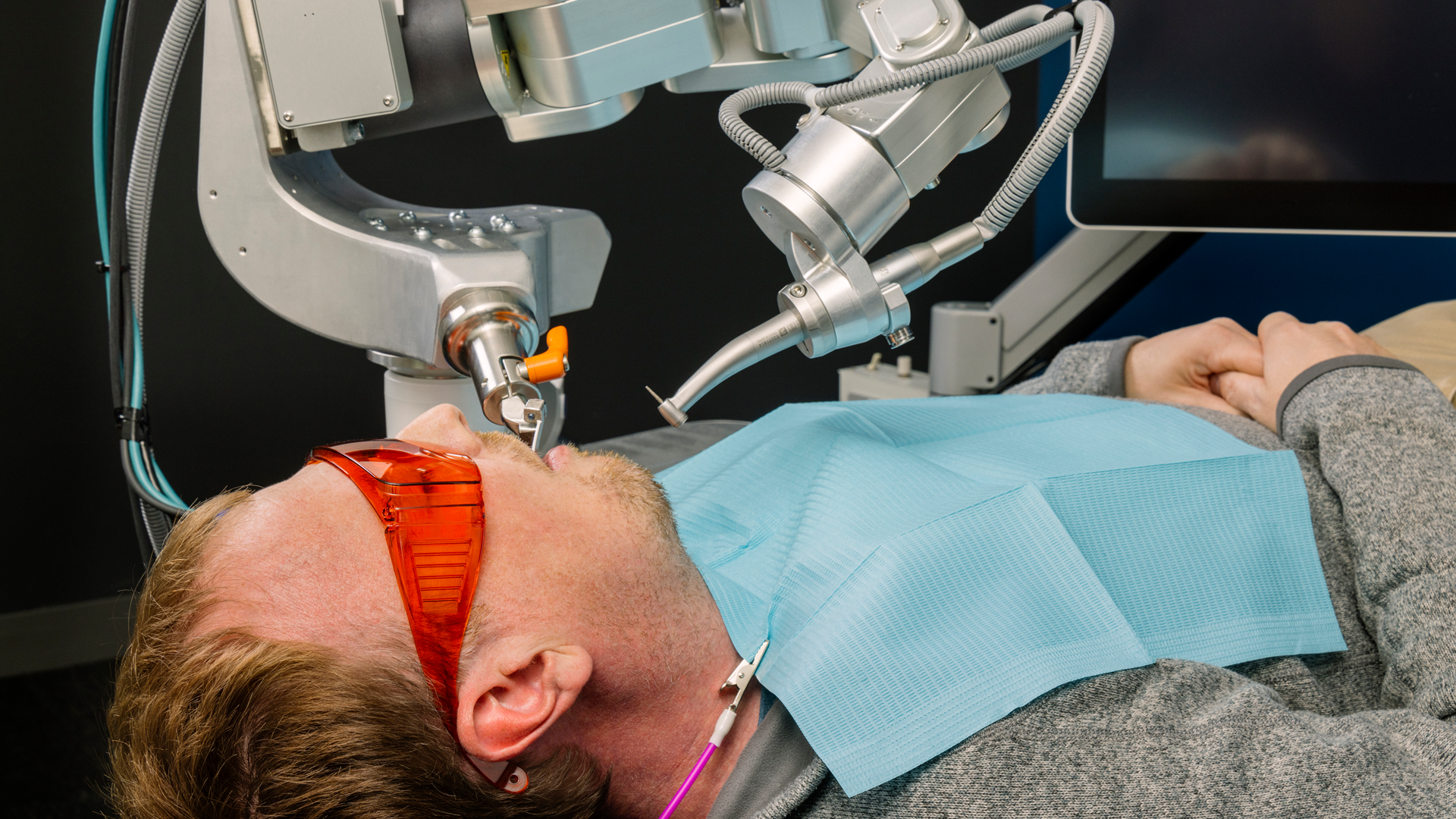
A robot dentist sounds ideal for a comedic Jetsons-style cartoon, but it might be your reality sooner than you think. AI dental technology developer Perceptive has revealed that one of their AI-fueled robots has completed a dental procedure on a human without supervision.
Perceptive’s robotic dentistry system combines AI-powered 3D imaging with a specialized robotic arm built for restorative dental procedures. Perceptive created the system over several years to match and even exceed human dentist speed and precision, with an eye toward cutting down on the time spent sitting in the dental chair.
Perceptive’s AI is able to measure and analyze information about a patient to help diagnose issues and come up with treatment. Perceptive's handheld intraoral scanner creates 3D pictures of a patient's teeth and mouth, and can even look under a tooth's surface. Perceptive’s AI algorithms analyze the data to create a treatment plan that the robotic arm can complete. For now, the automated procedures the robot can handle center on restorative dental treatment such as crowns. The company brags that the entire process can be completed in as little as 15 minutes. By comparison, a manual crown placement usually takes at least two hour-long sessions.
“We’re excited to successfully complete the world's first fully automated robotic dental procedure,” Perceptive CEO Dr. Chris Ciriello explained in a statement. “This medical breakthrough enhances precision and efficiency of dental procedures, and democratizes access to better dental care, for improved patient experience and clinical outcomes. We look forward to advancing our system and pioneering scalable, fully automated dental healthcare solutions for patients.”
AI Tooth Fairy?
The implications of AI-powered dentistry are potentially enormous. Automating the diagnostic and treatment processes and completing procedures at that speed means not only better experiences for patients but also a chance for far more people to get their dental needs taken care of than would be feasible right now.
There will be wariness from the public at first. However, should the AI and robot combination prove consistently successful, it might become even more common than other computer-assisted medical procedures, like the lasers programmed by computers to perform certain eye surgeries. In fact, the use of AI and robotics will likely minimize the potential for human error, a common concern in manual dental procedures.
The precision of the robotic arm, guided by the AI-driven treatment plan, ensures that procedures are executed with a level of accuracy that is difficult to achieve by human hands alone. Having a well-functioning robot is a boon for the dental profession as well. The AI robot could handle many of the more routine procedures that still take a lot of effort from a human perspective. That gives the human dentist more time and energy to focus on the more complex and fraught cases that the AI could not be trusted to address.
Widespread adoption won't be quick, though. Equipment and training costs, not to mention regulatory hurdles, will likely put some speed bumps in the way of you going to a robot dentist. That said, a successful, fully automated dental procedure is a clear indication of the direction the industry is heading. As AI and robotics continue to evolve, it is likely that we will see further advancements in the automation of dental care.







